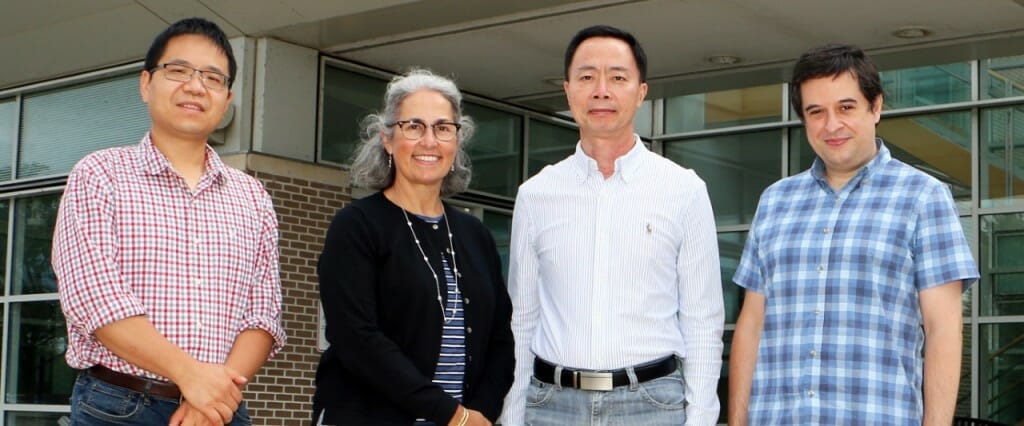Stem cell project to create new model to study brain development and Down syndrome
University of Wisconsin–Madison Waisman Center researchers are creating a new approach to study how changes to brain development in the womb result in intellectual disability in people with Down syndrome.
Their efforts, funded by an $11 million Transformative Research grant from the National Institutes of Health, may also reveal how brain development in individuals with Down syndrome differs from typically developing individuals, identify features that will help understand their intellectual disability, and find potential targets for therapy. They will also address questions that remain unanswered about brain development overall.
“Although Down syndrome is quite prevalent and we know a lot about individuals with Down syndrome — their characteristics, their features; we even know that they will develop Alzheimer’s disease — what we don’t have a good understanding of is how brain development in Down syndrome is different,” says Anita Bhattacharyya, professor of cell and regenerative biology. “We have surprisingly little information about this.”
Bhattacharyya, her Waisman colleague and UW School of Medicine and Public Health Professor of Neuroscience and Neurology Su-Chun Zhang, and additional collaborators at Waisman and the University of Washington-Seattle and Seattle Children’s Hospital, will develop a research model based on human induced pluripotent stem cells (iPSCs). The researchers say that current animal models used to study the syndrome don’t mimic the disorder well.

Waisman Center researchers Daifeng Wang, Anita Bhattacharyya, Su-Chun Zhang and André Sousa are leading a new effort funded by an $11 million grant from the NIH to develop a model for brain development in Down syndrome that relies on stem cells. Courtesy of the Waisman Center
Human induced pluripotent stem cells come from adult skin or blood cells that are reprogrammed to become virtually any other cell type, such as neurons, a type of brain cell. Using iPSCs from individuals with Down syndrome, the researchers can transform them into neurons from the cerebral cortex — a part of the brain that makes humans, humans — and study which developmental pathways are disrupted.
Down syndrome, also known as trisomy 21, is caused by an extra — or third — copy of chromosome 21. It’s the most common genetic cause of intellectual disability and affects approximately 6 million people worldwide.
With limited ability to access prenatal brain tissue to study development, Bhattacharyya hopes to directly compare their stem cells to prenatal tissue, verify the iPSCs are a suitable model and confidently move forward with them without the need for additional tissue.
The researchers plan to build an atlas of the prenatal cortex in Down syndrome. They will identify the specific types of neurons, synapses and molecular pathways that are altered in Down syndrome, particularly during prenatal development and just after birth.
“The atlas will give us a roadmap of what happens in prenatal brain development in Down syndrome,” says Bhattacharyya.
After determining these changes, they will use the iPSCs derived from individuals with Down syndrome to figure out if the stem cells mimic those differences observed in the prenatal brain.
“The model is only good if it recapitulates or mimics what’s really happening,” Bhattacharyya explains.
“Although Down syndrome is quite prevalent and we know a lot about individuals with Down syndrome … what we don’t have a good understanding of is how brain development in Down syndrome is different.”
Anita Bhattacharyya
So far, early results show that iPSC-derived cells recapitulate some of the changes observed in adult brains of individuals with Down syndrome, such as missing neuron types. These results give the researchers confidence their model will present more of these features.
In addition, Zhang’s lab will examine how neurons from people with Down syndrome may function differently. Previous data from Zhang and Bhattacharyya suggest neurons from people with Down syndrome are not as active as those from people without the disorder, and the project will extend these findings by digging deep into the causes of this reduced activity.
“This is my dream project,” says Bhattacharyya, “and it took 15 years to get it together because several things had to happen. One is, we had to assemble the right people to do this kind of project.”
The work will be done in collaboration with new Waisman Center investigators Daifeng Wang, professor of biostatistics and medical informatics and computer science, and André Sousa, professor of neuroscience. Sousa brings expertise in single cell sequencing in human brain development and Wang will contribute valuable computational skills, Bhattacharyya says.
The five-year grant is part of NIH’s High-Risk, High-Reward Research program, which supports exceptionally innovative or unconventional research projects with the potential to advance their field.
The research is supported by National Institute for Child Health and Human Development grant 1R01HD106197-01.
Tags: brain, disabilities, research, stem cells, Waisman Center




